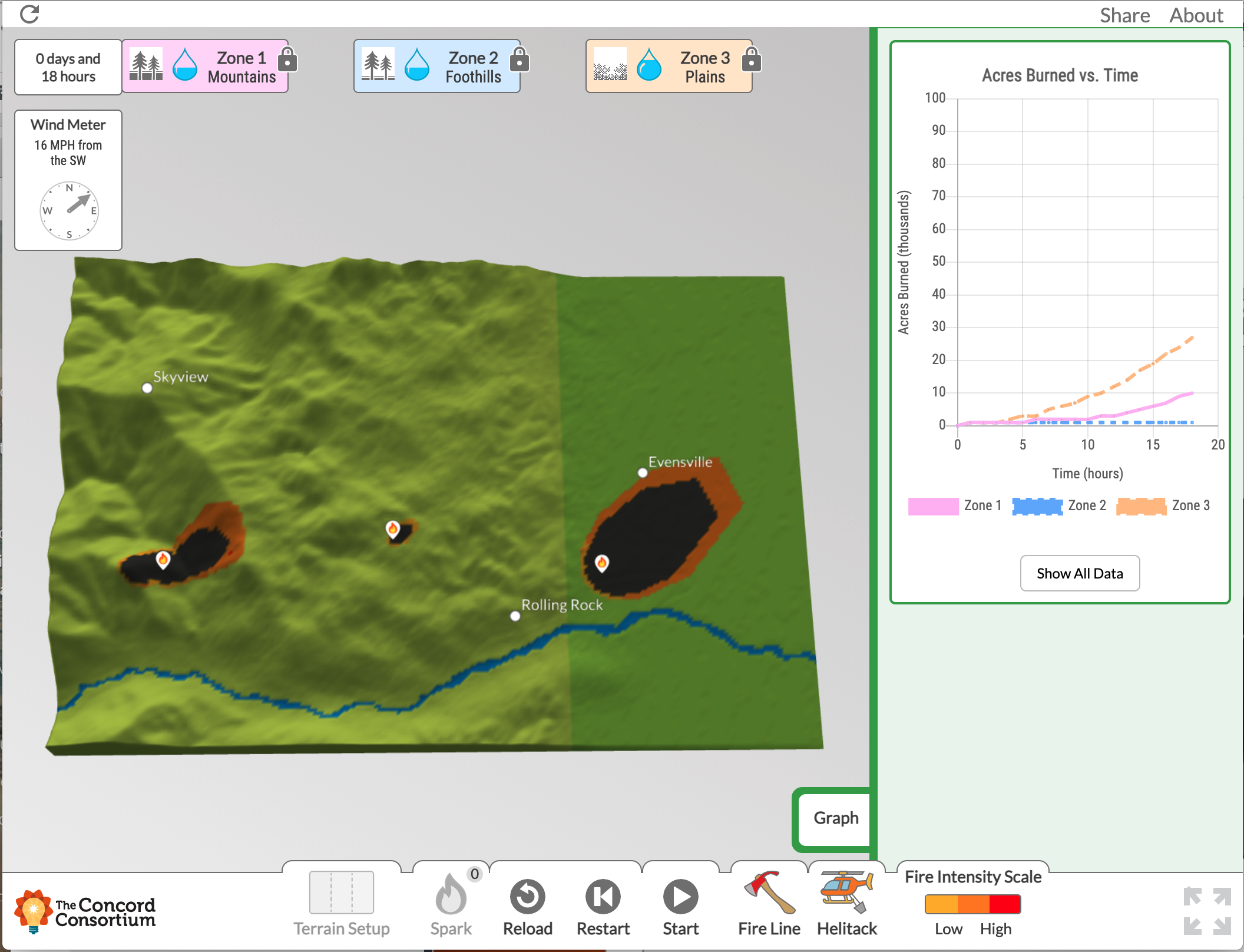The American West is burning.
Wildfires rage, firefighters battle to contain fires, families are forced to evacuate their homes, and smoke chokes neighborhoods hundreds of miles away. Multiple years of drought have desiccated trees, shrubs, and grasses and transformed the western United States into a tinderbox.

Air Quality Index and active fires in the western United States. https://fire.airnow.gov/
Today’s students are exposed to news about wildfires on an all-too-regular basis. An increasingly larger portion of those students live in areas where wildfire risks are high or where smoke has reduced the air quality. The GeoHazard project has designed, developed, and tested an online wildfire curriculum module for middle and high school students that addresses the factors that influence wildfires, as well as the risks and impacts that wildfires bring to people and their communities. We are still actively collecting data via field tests with participating research teachers, but felt that it was important to release the module to the public so that more teachers have the resources needed to teach this critical topic. The module is freely available at https://learn.concord.org/geo-wildfire
Throughout the five-activity module, students use the Wildfire Explorer model to investigate the effects of terrain, vegetation, wind, and drought on wildfire spread and intensity. Connections to real-world wildfires are made through case studies and data sourced from agencies such as the U.S. Forest Service, NASA, and NOAA. Students are asked to think about the effects of Earth’s changing climate on wildfire risks, the unintended consequences of a century of wildfire suppression, and how changes in frequency and intensity of wildfires bring both short- and long-term impacts to the ecosystems in which they occur. Finally, open-ended prompts and class discussion points engage students in thinking about how wildfires might impact different people and communities in their path.

Wildfire Explorer Model
The wildfire module is accompanied by several resources to make teaching easier. First, teachers who are registered on our STEM Resource Finder have access to the online Teacher Edition of the module, which includes in-depth scientific background, tips on using the Wildfire Explorer, discussion points, and correct and exemplar answers to embedded questions. Additional background resources on teaching about risk, uncertainty, and using online materials are provided. Second, teachers can track their students’ progress in the module with a real-time Class Dashboard where they can quickly read through question responses and give students feedback. Third, pre- and post-assessments are included, along with Teacher Editions and Dashboards for both tests.
The wildfire module focuses on the scientific factors that influence wildfire risks and impacts, but also touches on geographic and socio-economic factors. After learning about wildfires in the past and present, students make predictions about the future in light of climate change, population growth in previously wild areas, and wildfire mitigation strategies. By the end of the module, students will be better able to answer the question: How will wildfire risks and impacts change in 100 years?